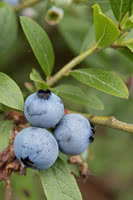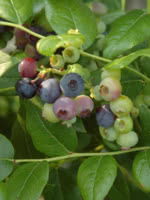Mon-Fri 9am - 5pm Mountain time
Lowbush Blueberry vs Chippewa Blueberry
Vaccinium angustifolium
Vaccinium x Chippewa
Lowbush Blueberry, commonly known as the Wild Lowbush Blueberry, is often wild-harvested and thrives in low pH acidic soil. This early low-bush blueberry produces white and pink bell-shaped flowers in the spring. Its fruit is smaller in size than high bush blueberry plants and is more flavourful with an intense blueberry taste-masking it perfect for fresh eating, baking, and preserves.
Note: Blueberries require very specific soil conditions. They need well-drained soil with a pH between 4.5 and 5.0. If the starting pH of your soil is between 5.1 and 6.2 you can lower it by adding sulfur. We recommend against planting blueberries in soil with a starting pH greater than 6.2. Please do your own research before buying any blueberry plants.
Chippewa Blueberry is the perfect shrub for attracting birds and butterflies. Incredibly cold-hardy, the Chippewa Blueberry is an upright shrub making it easy for harvesting. Known for producing high yields of large blue-colored berries, this blueberry is a favourite for fresh eating, baking, and preserves. As with all blueberries, the Chippewa needs soil with a low pH and high acidity.

